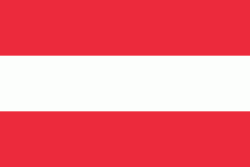Dürnstein
Dürnstein is a small town on the Danube river in the Krems-Land district, in the Austrian state of Lower Austria. It is one of the most-visited tourist destinations in the Wachau region and also a well-known wine growing area. The municipality consists of the Katastralgemeinden of Dürnstein, Oberloiben, and Unterloiben.
The town gained its name from the medieval Dürnstein castle, which overlooked it. The castle's name derived from the German duerr/dürr, meaning "dry", and Stein, "stone". The castle was dry because it was on a rocky hill, high above the damp conditions of the Danube at the base of the hill, and it was built of stone. The modern town stands between the castle and the river.
The town gained its name from the medieval Dürnstein castle, which overlooked it. The castle's name derived from the German duerr/dürr, meaning "dry", and Stein, "stone". The castle was dry because it was on a rocky hill, high above the damp conditions of the Danube at the base of the hill, and it was built of stone. The modern town stands between the castle and the river.
Map - Dürnstein
Map
Country - Austria
 |
 |
| Flag of Austria | |
Austria emerged from the remnants of the Eastern and Hungarian March at the end of the first millennium. Originally a margraviate of Bavaria, it developed into a duchy of the Holy Roman Empire in 1156 and was later made an archduchy in 1453. In the 16th century, Vienna began serving as the empire's administrative capital and Austria thus became the heartland of the Habsburg monarchy. After the dissolution of the Holy Roman Empire in 1806, Austria established its own empire, which became a great power and the dominant member of the German Confederation. The empire's defeat in the Austro-Prussian War of 1866 led to the end of the Confederation and paved the way for the establishment of Austria-Hungary a year later.
Currency / Language
| ISO | Currency | Symbol | Significant figures |
|---|---|---|---|
| EUR | Euro | € | 2 |
| ISO | Language |
|---|---|
| HR | Croatian language |
| DE | German language |
| HU | Hungarian language |
| SL | Slovene language |















